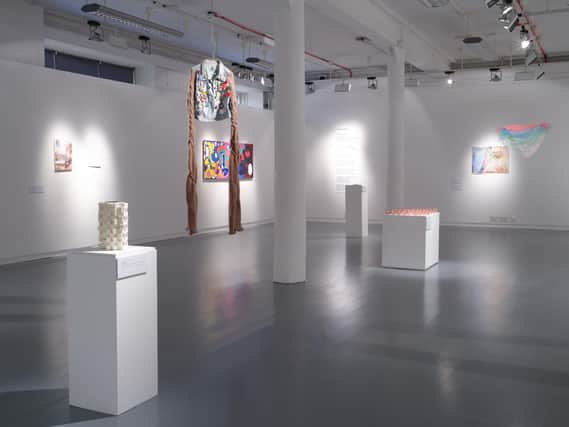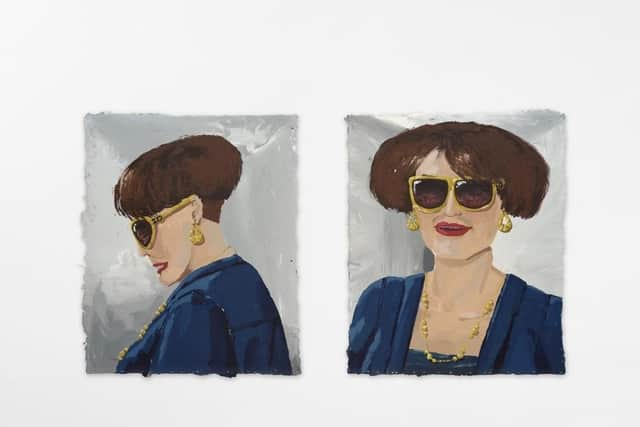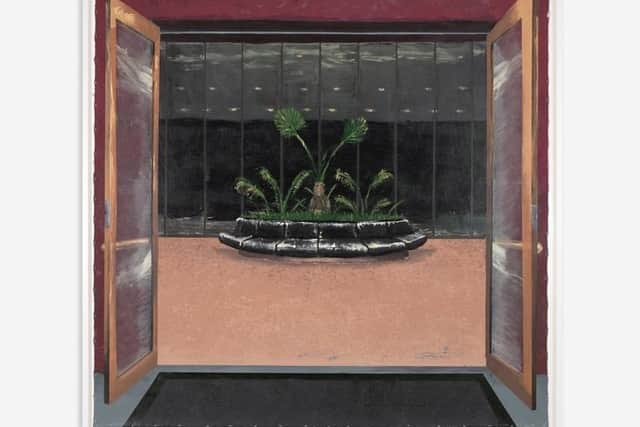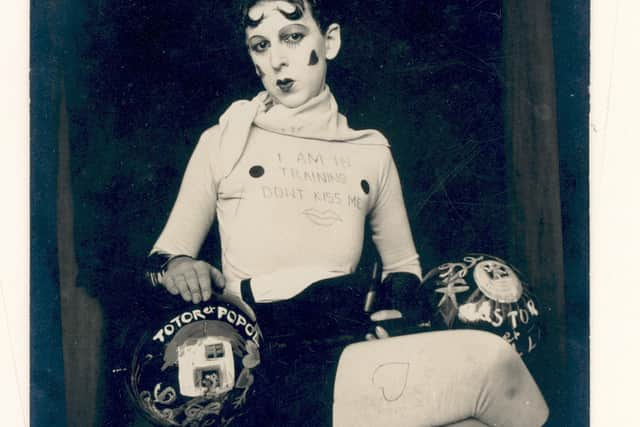Art reviews: Unlocking the Extraordinary | Manuel Solano | Claude Cahun


Unlocking the Extraordinary, Kelvingrove Art Gallery and Museum and Project Ability, Glasgow ****
Manuel Solano: The Top of Each Ripple, Dundee Contemporary Arts ****
Advertisement
Hide AdClaude Cahun: Beneath This Mask, Gracefield Arts Centre, Dumfries ****


Joyce Laing, who died in July at the age of 83, pioneered art therapy in Scottish hospitals and prisons. She also amassed, over decades, a remarkable collection of outsider art, some of it rescued from bins as large psychiatric hospitals closed down. She gifted her Art Extraordinary collection (she disliked the term Outsider Art) of more than 1,000 items to Glasgow Museums in 2012.
A permanent display of objects from the collection was recently unveiled at Kelvingrove, along with a temporary exhibition, Unlocking the Extraordinary, in which contemporary artists who face barriers to the art world due to health, disability, social circumstance or isolation respond to work in the Art Extraordinary collection. The project was organised by the charity Outside In as part of their New Dialogues initiative, supported by Glasgow Museums and Project Ability, where the exhibition continues.
Laing’s Art Extraordinary is powerful and poignant. Although we know nothing about most of these artists, in some cases not even their names, the work has raw energy, a drive not related to training or the availability of materials but an unflinching need to create. Shetland-born Adam Christie carved faces from blocks of stone; an artist known only as “Willie M” made expressive ceramic faces. There are small polished sculptures by Kenneth Annat and pictures and constructions by Gordon Anderson. The display also references other artists: “weaver of grass” Angus Macphee, and painter and embroiderer Antonia Jabloner.
The eight Glasgow-based artists in Unlocking the Extraordinary made their work in lockdown, using elements of the collection as jumping off points for their own fully realised art projects. The work of all eight is represented at Kelvingrove, while the parallel show at Project Ability has more room for additional works and larger installations.


Works range from Bel Pye’s striking denim jacket with long knitted sleeves, to Ornaidigh Thompson’s organza cloud, which is part of an installation including photography, written text and a cast piece of jesmonite. Neurodiverse artist Grant Glennie makes meticulous black and white abstract drawings, recording the precise amount of time spent on each. He has also made a digital work inspired by one of Jabloner’s map pieces, and an installation of origami birds made from losing lottery tickets (a rich metaphor, if ever there was one).
Advertisement
Hide AdStuart Low works in a bright abstract style, and in poetry, and Cliff Andrade charts the days of a month according to mood through colour-coded plasticine. His Journey Through A Therapeutic Landscape is a joyful and detailed landscape in felt pen, a wide swathe of the country seen from above, alive with colour.
There is a different kind of triumph over adversity in the first show in Scotland by Berlin-based Mexican artist Manuel Solano at DCA. Solano was forced to transform their practice when, in 2014, they lost their sight due to an HIV-related illness. That this is mainly a show of large-scale paintings is testament to a determination to find new ways of working, with assistants supporting the artist to make work through touch. There is a clear progression, from the rougher, angrier 2014 series Blind, Transgender with AIDS to the more polished works of the last two years.
Advertisement
Hide AdThe show is a kind of extended exploration of the self. Paintings capture key moments on Solano’s artistic journey, like the frieze of geometric birds seen in childhood in a Mexico City shopping mall when the artist first grasped the concept of depicting three-dimensional objects in two dimensions. There are influential people, like Solano’s flamboyant great aunt Anna, and key works from popular culture: the film Jurassic Park and Paula Cole’s 1996 album The Fire. The connections are carefully explained in Solano’s text, making this exhibition one of the most direct and accessible contemporary shows I’ve seen for some time.


The most complex and intriguing works in the show explore locations and interiors which are part remembered, part invented: a poolside populated by sculpted plastic sun loungers, possibly versions of a design by Charles Zublena; a waiting space with palm fronds and black leather chairs, a hotel lobby or airport lounge, unpeopled and eerie.
There are also three films: La Patita, which uses clips from childhood home videos (in the kindergarten pageant, Solano manages to dance with the girls as well as the boys); Masculina (the feminine form of the adjective “masculine”) in which the artist poses in various Miami locations, and Portrait, a six-minute close-up of their face. In a way, this is what the show is: a close-up consideration of what has made this particular self, poignant because, while it has been constructed in their mind’s eye, the artist will never actually see it.
Nearly 100 years ago, French artist Claude Cahun was using the camera to explore the notion of the self, demonstrated in an excellent show from Hayward Touring, now at the Gracefield Arts Centre, Dumfries. Born Lucy Schwab in 1894, Cahun adopted a gender neutral name in 1917 saying “Neuter is the only gender that always suits me”. In the 1920s and 1930s, she was on the fringes of Surreallist group in Paris, a friend of Breton, Man Ray and Dali.
In those two decades, Cahun created an extraordinary body of work using herself as the subject. The prints in this show, made from her negatives, look appropriately sharp and fresh. Her approach changes constantly: sometimes she uses costumes, disguises, placing herself in theatrical tableaux; at other times she uses her body as a prop in a landscape or interior. One series uses only her head, another photographs her from above, making abstract shapes with her body on a bed. Sometimes she is deliberately playful, at other times staring back, shaven-headed, questing and serious.
Sometimes she prefigures Cindy Sherman, at other times, Francesca Woodman; an image of her diving into the sea seems to prefigure Yves Klein’s Leap into the Void. (Working when she did, she would have faced greater technical challenges than any of them). In a way, she is doing the opposite of Manuel Solano, not a composite portrait of a single self, but a multifaceted depiction of plural selves; as Cahun herself said, “behind this mask lies another”.
Advertisement
Hide AdIn 1938, Cahun and her partner Suzanne Malherbe (who also took a gender neutral name, Marcel Moore) fled occupied France for the Channel Islands. (Moore was her artistic collaborator, too, very likely the one behind the camera.) There, they became involved in the Resistance, and were eventually arrested. Cahun was given a death sentence by the Nazis. The war ended before it could be carried out, but her time in prison caused irrevocable damage to her health. She died in 1954.
One of the last photographs here is from 1945, when she was 51, wearing a trenchcoat and headscarf (one suspects this is a costume, too) and gripping a Nazi officer’s cap badge between her teeth. It’s an image of courage, in art and life, an artist little known in her lifetime whose work would make her a cult figure nearly 70 years after her death.
Advertisement
Hide AdUnlocking the Extraordinary runs until 24 September at Project Ability and until 21 November at Kelvingrove (the Art Extraordinary Collection display is permanent); Manuel Solano until 20 November; Claude Cahun until 1 October